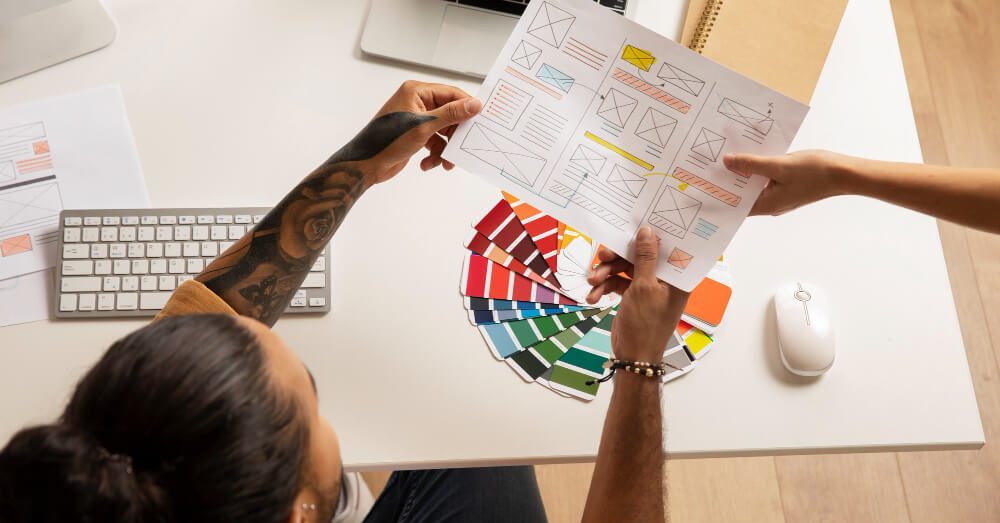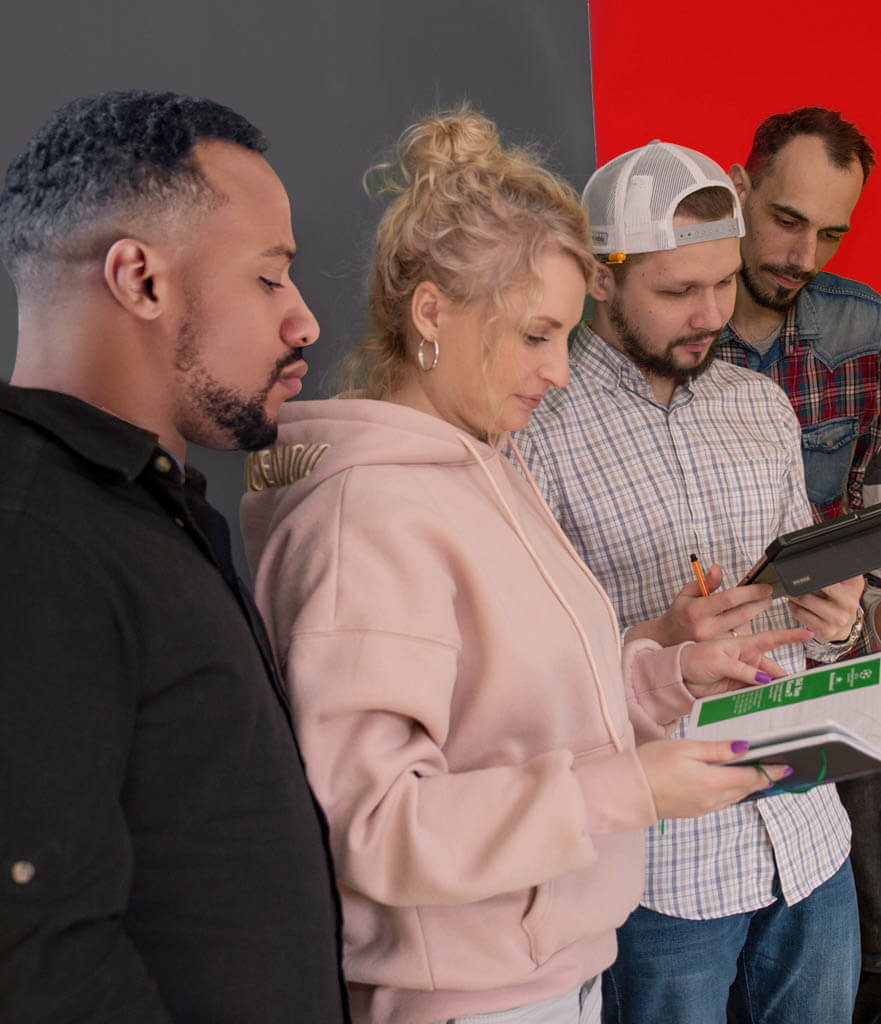Empathy Mapping in Design Thinking

Introduction
An ordinary product team relies on the user and his experience in its decisions. To do this, they conduct research, interviews, usability testing, surveys, collect feedback from technical support and sales, read articles and third-party research.
All of them forms the image of the user for the product team — the person for whom the service is being developed, whose tasks and pains they solve. But everyone has their own image, it may be incomplete or different from the vision of a colleague.
Here we come to the question: “How to synchronize and share knowledge about the user with each other?” And most importantly: “How to look at a user not as a UserID, but as a real person?”
The answer to these questions is the Empathy Map framework.
The empathy mapping is a method of describing the target audience. It helps to identify the values, views, pains and motivations of the client with the help of external (media, social networks, surveys, interviews, testing) and internal (data analysis, assumptions and thoughts) sources.
About the benefits
Why use the map?
There are several reasons why to choose this particular framework. Let’s start with the goal.
Share knowledge about the user with each other in order to get closer to him and “land” working solutions on his experience.
This goal very logically fits into the format of working with the empathy mapping, because in the process the team looks at the user more broadly than just at his scenario of working in the service and the problems that he has.
“Humanizing” the user will help to make somewhere dry research data more engaging.
All in one place. You can upload the entire context about users from your head to the map and make it available to others: everything that everyone in the team once read, heard, saw about the user. All the team thinks and wants to check if this is really the case.
This is how we share our knowledge with others and develop thought together.
Visibility. You will be able to access the map and quickly compare your ideas and solutions. The map is a ready—made artifact that is quite tangible and relatively durable. It will be possible to rely on it when deciding on the development of some new feature or concept.
This is such a “zero kilometer”. Ideally, it will be supplemented and changed as the user studies.
Highlights the blind spots. It will help to see the little-studied areas of the user’s life. If one of the map blocks remains empty, this is also a good result. So the team doesn’t know much about this side of the user’s life, and there is something to study and investigate.
Integrity. A general look at the picture of the user’s life and work can lead to new ideas, give insights. Like any team analytical work, the map can cause the development of some old idea or to the birth of a new one.
About the format
In fact, the map is a visual template that consists of blocks:
What does a user
– hear?
– see?
– think?
– feel?
– say?
– do?
What is his/her
– pain points?
– values?
Stages
Step 1. Refresh the context
Lets participants listen to clips from interviews with different users (10-15 minutes each).
Everyone listens at a different pace, someone stops, someone rewinds.
Therefore, prepare an additional material for those who finished listen first. It could be a list of websites, forums, platforms on which our customers “live” — for a complete picture it is useful to see which online platforms and what vocabulary surrounds the user.
Step 2. Who is your user?
Before filling in the blocks of the map, try to visually imagine who will be discussed today. Describe his/her appearance, background, interests, even some character traits.
Hang user’s portrait in the center of the map to maintain focus and start working with blocks.
Step 3. Put thoughts on stickers
Next, start working with a visual template. Put all your theses on the topic of a certain block on stickers.
Step 4. Work out what happened
After working in subgroups, 1 person from a couple go out and read aloud all what they have and leave on the template. Immediately “clean” the duplicates and discuss controversial points.
Do it for all 6 blocks.
Step 5. Discuss the result
After filling out the visual template of the map, evaluate what came out. To make it easier, prepare reference questions, answering which, it is possible to draw useful conclusions.
Result
As a result, the stickers must be digitized and turned into a table with categories of abstracts. The entire team should have access to this table. The material can be useful not only in development, but also in product promotion.
In the future, as research materials accumulate, it will be necessary to supplement the map and it will be possible to do the same work for other segments of the product audience.
Conclusion
It is important to remember that the map is just a tool, and if your goal is to try a fashionable framework, but you do not have enough material or a task suitable for it, then it is better not to. Most likely, you will not get satisfaction, and the team will form a wrong idea about this format of work.
But if it’s not, then don’t be afraid to try empathy mapping.
Search Blog
Categories
- Analytics(16)
- Android Development(1)
- Apps development(1)
- Branding(32)
- Branding solution(20)
- Business(20)
- Construction marketing(2)
- Design(12)
- Design and creative(15)
- Digital solution(14)
- Facebook(4)
- Google Ads(6)
- Graphics(9)
- Instagram(8)
- Marketing research(15)
- Marketing solution(20)
- Marketing strategy(23)
- PPC(9)
- SEO(12)
- SMM(18)
- Social media marketing(12)
- TikTok(5)
- Uncategorized(7)
- Video content(4)
- Video production(4)
- Web Design(4)
- Web Development(6)
- YouTube(3)
Categories
- Branding solution (2)
- Brand identity
- Brandbook
- Design and creative (2)
- Graphic design
- Illustration
- Marketing solution (4)
- Marketing
- Marketing research
- Marketing strategy
- Mystery shopping
- Didgital solution(4)
- Google, Facebook ADS
- Search Engine Optimisation
- Website development
- Digital marketing
- Social media marketing(5)
- Facebook marketing
- Instagram marketing
- LinkedIn marketing
- Complex SMM
- TikTok Marketing
- Video production(4)
- Short video production
- Video animation
- Video presentation
- YouTube Marketing
Our Top Articles
Recent Posts
- How CMCG Marketing Agency Helps Grow HVAC Businesses October 24, 2024
- Marketing Solutions for HVAC Companies September 13, 2024
- Working with Negativity on Social Media October 3, 2023
- The Difference Between Rebranding and Redesign October 2, 2023
- Font Marketing Development: The Power of Typography in Branding and Design September 28, 2023
Popular Tags
Advertising Analytics Artificial intelligence brand Brand book Brand identity Brand management Brand platform Brand positioning Brand recognition Brand visibility Content marketing Customer Journey Map Customer segmentation Digital advertising Digital marketing Facebook Google Ads Graphic design Influencer marketing Instagram Instagram post Landing page Logo design Marketing Marketing agency Marketing efficiency Marketing funnel Marketing strategy Native advertising Pack design PPC Reels SEO Short videos SMM Social Media Social Media Marketing SWOT analysis Target audience TikTok Tone of voice Website Website development YouTube

